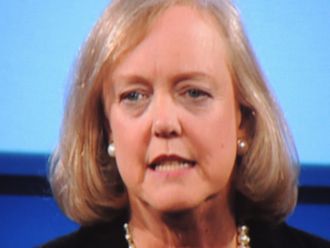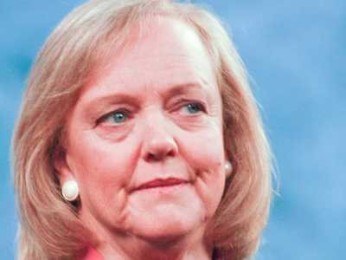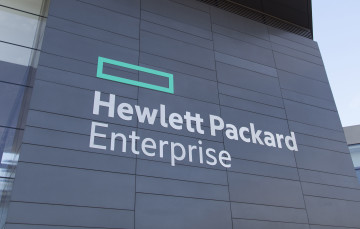 Meg Whitman was quizzed by the audience at the Canalys Channels Forum in Barcelona, today.
Meg Whitman was quizzed by the audience at the Canalys Channels Forum in Barcelona, today.
She said that the reason for splitting the company was to be more focused. She said it was remarkably complex on all fronts whether it was the IT or the supply chains HP used.
On August 1st HP started operating as two separate companies she said, and on November 2nd there will be two separate Fortune 50 companies.
She believes that HP will demonstrate the success of the separation. The two companies will be called HP Inc and Hewlett Packard Enterprise. She said HP wanted to avoid inventing a new brand name and wanted both companies to be linked to the HP heritage.
HPE will have a green rectangular logo. HPE will include HP financial services. On November the 2nd, both companies will probably still be in the same buildings. She said that there’s a joint venture between HP Inc and HPE to work together on the supply chain to leverage the size.
Whitman said the biggest challenge was the IT separation. She said the company had to change emails, URLs, servers, and the rest. She said HPE will be a much faster and agile company but one thing that won’t change is partner focus. “Channel is in our DNA,” she said.
Whitman said she has rooted out the “nay sayers” in the company. She said the separation means both companies will have something of a rebirth. Everyone in both companies is going to be “fully engaged”.
She said HP has increased R&D spending every year for the last four years. She said in a software defined world infrastructure matters more than ever. She thinks configuration of infrastructure to apps will be an important part of HPE’s strategy.
Software is only seven percent of revenue but HPE is about providing answers for the new type of IT.
She said that the slimming down of headcount in the services business recenrly was intended to make that business unit leaner and meaner and HPE expected revenues in that sector to grow.
She said the Safe Harbour provision that the EU court ruled was invalid yesterday wouldn’t affect the two companies too much, because data was generally held locally. There may be changes but she believed HP set that process going four years ago.
One question from the audience that was asked, but wasn’t aired, was whether Whitman would vote for Winsome Carly Fiorina as president of the USA.


















